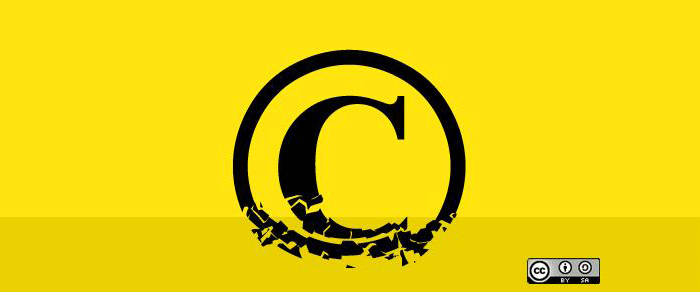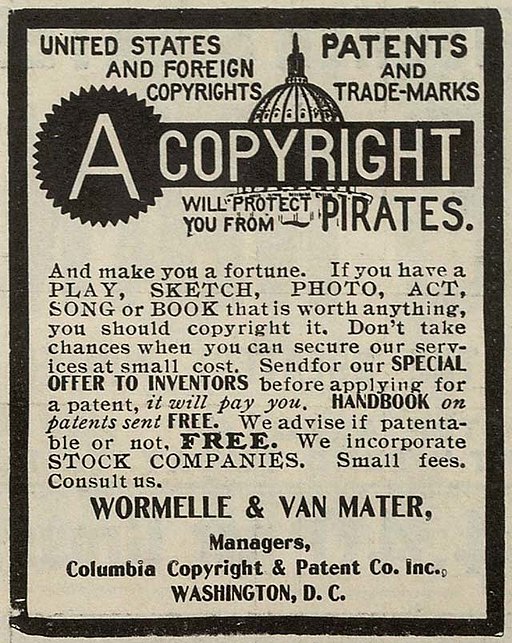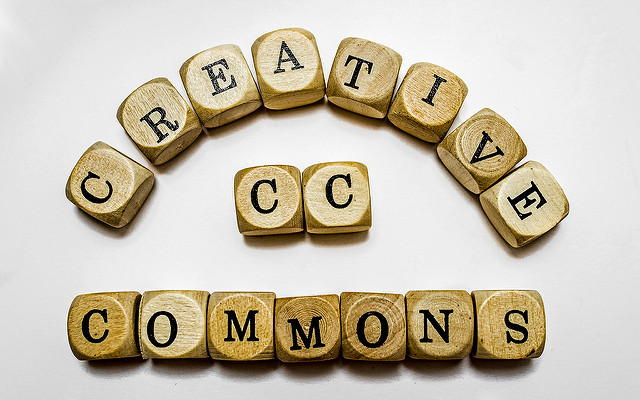
What is copyright? Very few people outside the creative industry have a strong or accurate understanding of copyright law. Let’s review some copyright basics, from the ground up.
What is copyright?

Copyright occurs as soon as an idea is “fixed in a tangible medium.” It does not require registration or a fee. The moment you set down something on paper or pixels, that specific rendition is considered copyrighted. This doesn’t copyright the idea behind the design, of course: just the design itself.
A huge range of things can be copyrighted. This includes obvious things like songs, books, photographs as well as less-obvious creative output like computer programs.
Copyright is a legal right that entitles you control over how your work is used. It prohibits other people and companies from “exploiting” (i.e. displaying or distributing) your copyrighted work without your consent. You can license use of the work to others at your discretion without giving them your copyright. License grants can be extremely broad or extremely specific, depending on the contract you work up with the end user.
Copyright is violated when work is distributed without consent of the rights-holder. It doesn’t matter if you make money off the distribution, or if it was done with commercial intent. The distribution is the violation, not the money making. That’s why sharing movies over PirateBay is illegal.
Copyright in the United States lasts for a long time: the lifetime of the author plus 70 years. When a work’s copyright expires, it moves into the “public domain.” Public domain works can be used by anyone for any purpose, without restriction. The public domain includes things like the complete works of Shakespeare, Bach’s sonatas and Ansel Adam’s WPA photographs. Age isn’t the only factor: a bewildering range of criteria are used to determine if a work is in the public domain.
Work can also be voluntarily released into the public domain by the rights-holder. By doing so, the rights-holder irrevocably makes the work free to all, for any purpose, without credit, sourcing or consultation.
What is work-made-for-hire?
Some employment agreements assign the copyright of all the work you do during your employment to the employer. These are called “work-made-for-hire” agreements, and they’re typical for full- and part-time employees at creative agencies. If you’ve ever watched Silicon Valley, you may remember a large part of the plot turning on whether a character used company equipment to test their software. If so, then the company would own the software, thanks to their work-made-for-hire agreements with employees.
Work-made-for-hire agreements are especially common for products that require the creative input of many people. Trying to parcel out which developer owns what copyright to a website’s components would be impossible, so it’s all owned by the company that built the website. The same thing routinely happens in film production and video game development.
How can I used copyrighted work?

Since every creative work is copyrighted at the moment of inception, how can anyone use anything? There’s the hard way: you can negotiate with the creator to license you the rights to use that content in your project. But the much more common way is working with a stock agency.
Companies like ShutterStock license huge libraries of visual content for use. You pay a subscription fee, and then use content from their website. Behind the scenes, the stock agency has negotiated agreements with their content providers. These agreements allow the agency to “sub-license” their copyrighted work to anyone who pays for it. Provided you obey the term of the licensing agreement, you’re free to use the content in any way you’d like.
What about Creative Commons?

Image by Dennis Skley; used under CC BY-ND 2.0
To combat the complexity of copyright law, Creative Commons was created. It’s a tool that creators can use to easily pre-license their content for a specific type of use. Creative Commons licenses are standardized, permitting specific uses while disallowing others.
CC licenses are designed to make content more accessible, so they don’t involve financial compensation. Crucially, CC licenses are machine readable, allowing for the speedy and programmatic categorizing of copyrighted works. This makes CC-licensed works easy to find and use, increasing their value for end users.
Creative Commons has unlocked a huge collection of modern creative works by simplifying the licensing process. Here’s a quick collection of the most basic Creative Commons licenses:
- CC0: Public domain. Any use is permitted. Sites like Pixabay work on CC0 to permit any use for free.
- CC BY: Attribution. any use permitted, but the rights-holder must be credited in a clear and obvious way. This is the foundation of all the licenses below.
- CC BY-SA: Share-alike. The work can be remixed, tweaked and built upon by others freely.
- CC BY-NC: Non-commercial. Prohibit uses that are “primarily intended for or directed toward commercial advantage or monetary compensation.“
- CC BY-ND: No derivatives. Others can download and share the work, but it can’t be reused by others. Contrast with the share-alike license.
These licenses can be combined as well, creating more restrictive licenses. You can see a full list on the Creative Commons website.
CC BY-SA is the most common, allowing work to be built upon provided the creator is credited. Regardless of the license, it must be published alongside the work in question. This typically means a link back to the Creative Commons human-readable licenses, which are linked above.
Where can I find Creative Commons works?
There are a few search engines you can use to find Creative Commons works. Depending on the type of content you’re looking for, you’ll want to use different tools. For photographs and illustrations, Pixabay is an excellent collection of CC0 works. The vast majority of Wikipedia’s visual content is licensed under CC BY-SA, and Flickr provides images under a wide variety of Creative Commons licenses.
Hero image by Opensource.com; used under CC BY-SA 2.0
You might also like: